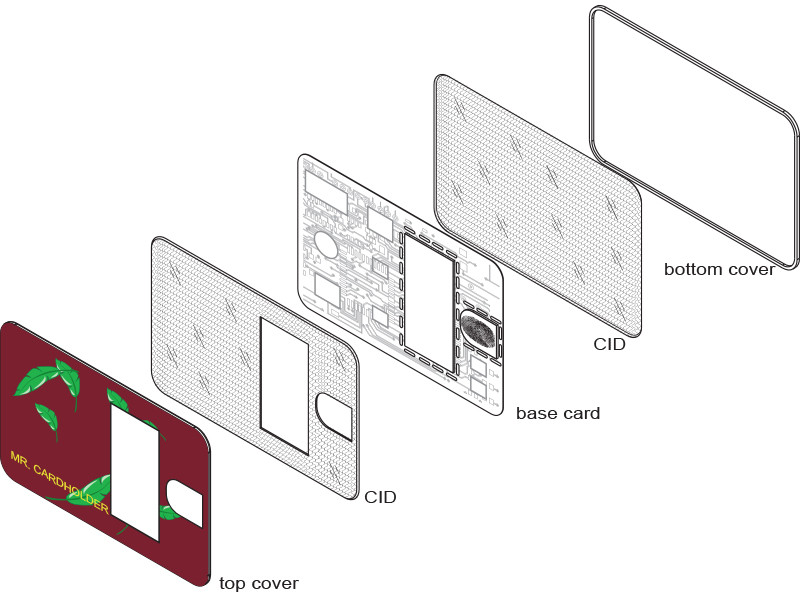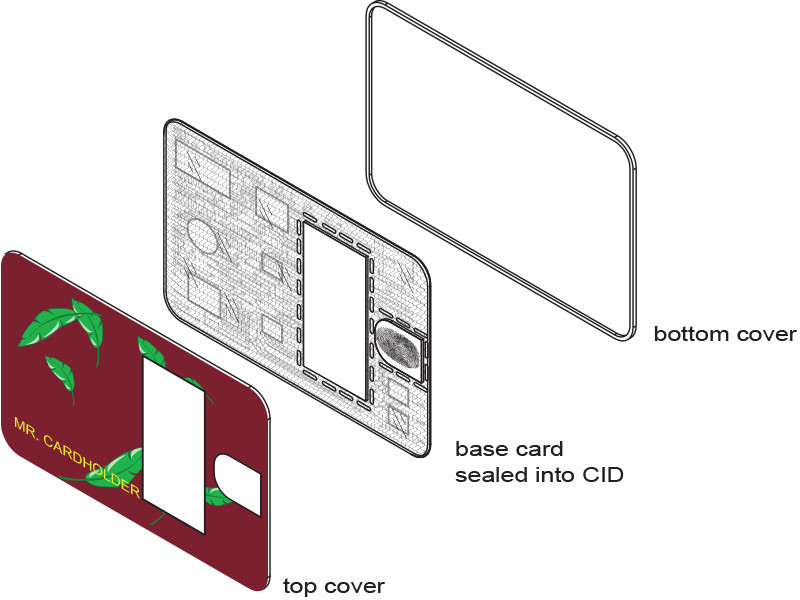Problem to be solved
Prevention of fraudulent use of the credit or ID cards in the event of either the theft of the card number or of the card itself. The vast majority of smartcards can likely be defeated if the theft obtains possession of the smartcard and, in some cases, a copy of the owner’s fingerprint. Once the physical card has been acquired it can be hacked and any information including private keys stored therein can be obtained. What is needed, therefore, is a smartcard which cannot be hacked.
Solution
Use a mash of wires which are incorporated within a plastic film to provide a protection mechanism for critical data stored within the device such as one or more private keys and stored biometric information. Very fine wires embedded in a plastic film forms a circuit where the resistance capacitance or inductance is continuously monitored for any significant changes.



ITI Smartcard TM Future Enhancements
Wire mesh creates a chassis intrusion detector (CID).
CID continuously verifies that the card has not been breached.
Use the only copy of a unique private encryption key.
CID electronics erases the private key making card useless in case of detected intrusion.
The card uses one or more fingerprints and biometric signature like a person’s heartbeat.
The card uses a biometric signature such as a shape of the person’s heartbeat.
The card will not communicate unless the biometric checks are passed.
Benefits
Reducing and ideally preventing fraud.
Interaction with near field communication reader
The fingerprint information is never transmitted off of the card
Credit card company can be chosen from a display on the smartcard.
Smartcard can be used for any positive identification purpose using a similar protocol.
A single smartcard can enable severity of applications such as passports, driver’s licenses, etc.
Status:
Patents: 2 Pending Patent Applications
Development: Proof of concept is under development

